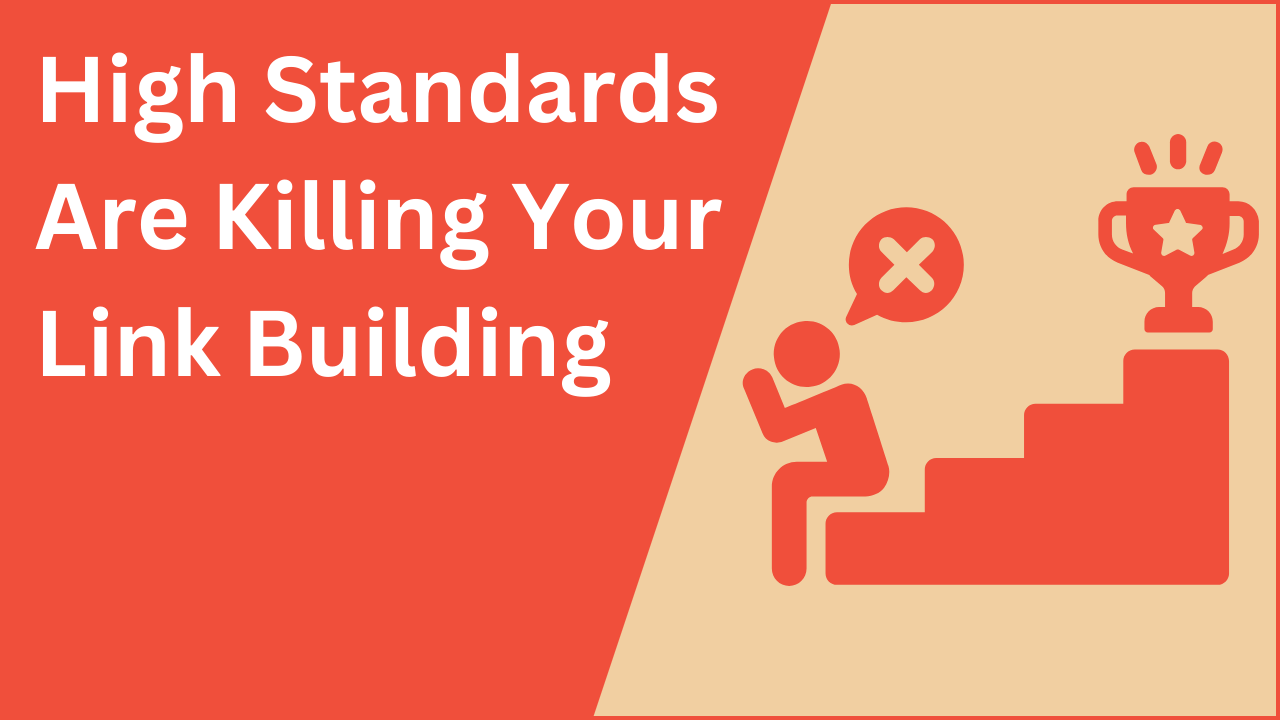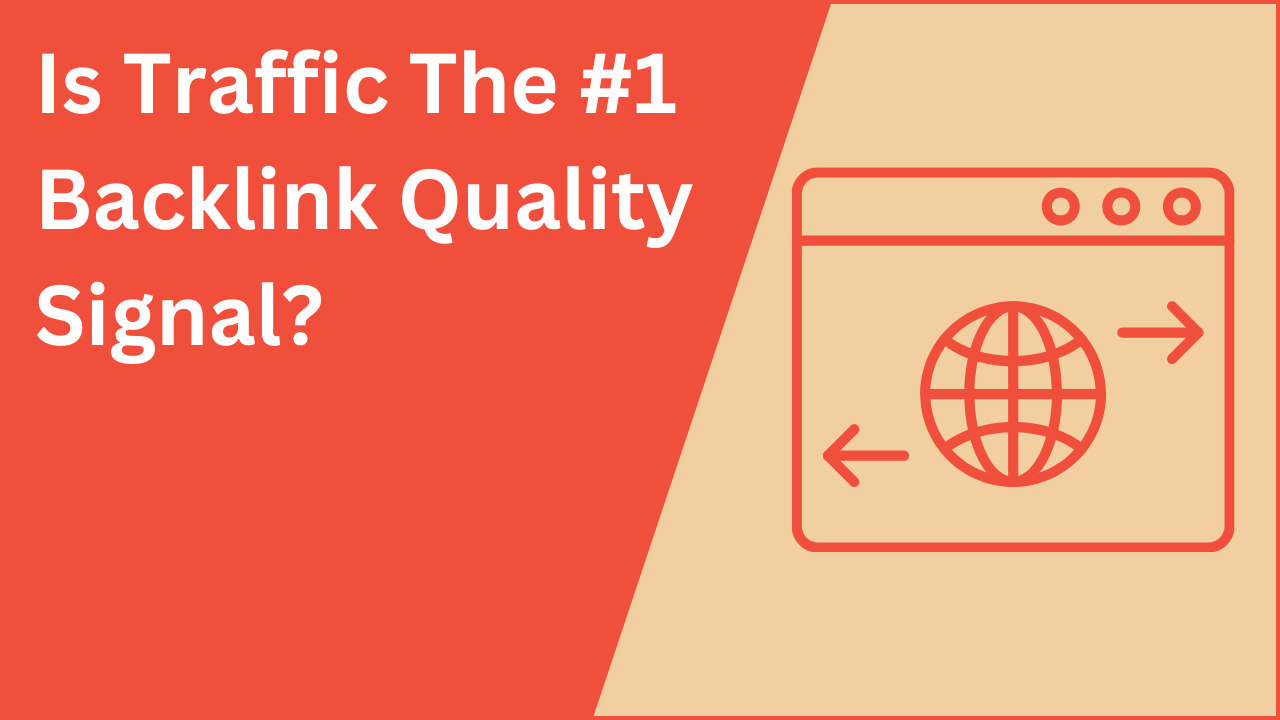In the grand scheme of things, we all know that backlinks are one of the most important (if not the most important) ranking factors that Google uses to determine what websites rank highest in the search engine.
Competitor backlink analysis is one of the most effective and simple ways to find a lot of backlinks and determine just how many backlinks you’ll need to outrank the competition.
The goal of this guide is to break down this link building strategy into simple and easy to follow steps that you can use to secure more backlinks for your website. I want you to know that this backlink strategy seems a lot more difficult than it is.
Just follow along and you’ll be pulling in the backlinks in no time!
What is Competitor Backlink Analysis?
The process of performing a competitor backlink analysis involves reverse engineering the things your competitors are doing right. You essentially want to figure out what websites are linking to them so you can build the same (or similar) links to your website.
To do this, we’ll use the backlink analysis tool Ahrefs to spy on our competition.
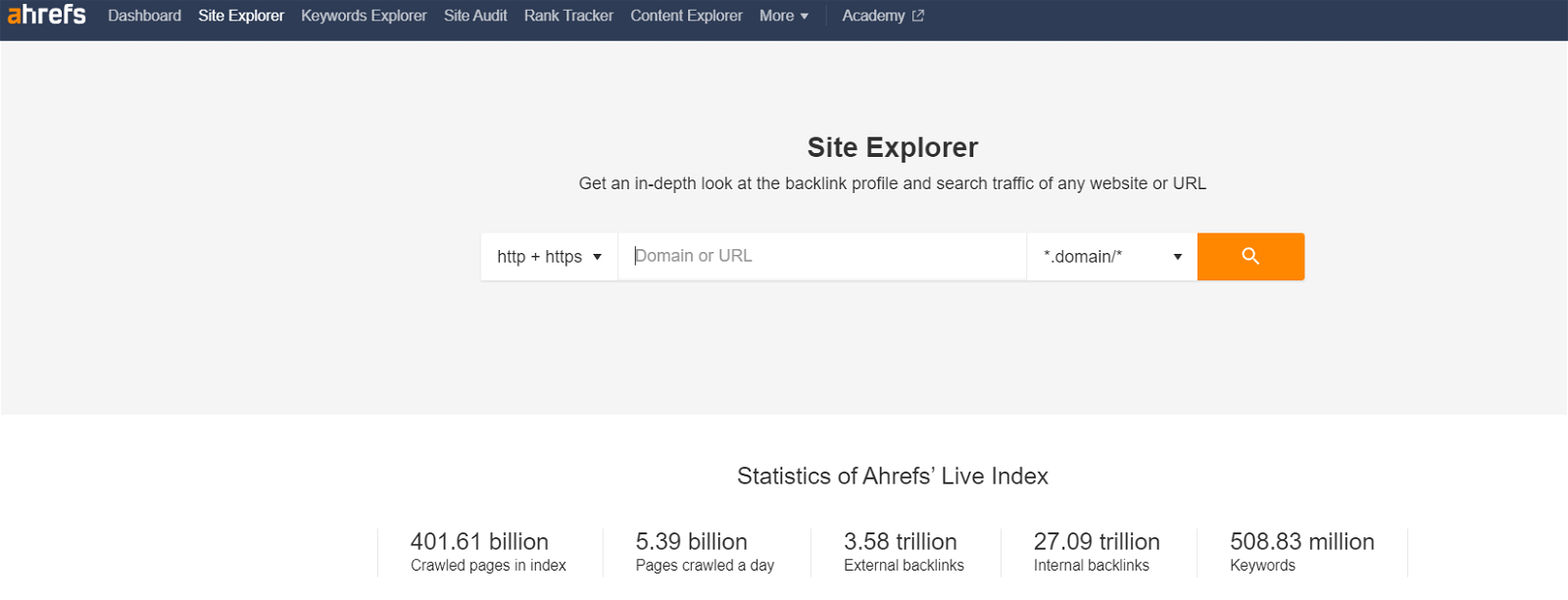
This tool allows us to input our competitors’ domains and learn more about what websites are linking to them and how many backlinks they have pointing to various pages.
The goal of competitor backlink analysis is to determine how many backlinks we need to rank for certain keyword phrases and what domains we need to create outreach campaigns around to get those links.
Why is Competitor Backlink Analysis Important?
Identifying competitor backlinks is important because it’s an easy but effective way to acquire backlinks and potentially outrank your competition. Let’s talk specifically about some of the reasons why you would want to use this link building strategy.
It Enables You To Copy Your Competitor’s Backlinks
The first reason is because you’ll be able to see what websites are linking to your competitors. By figuring out who is linking to the top ranking competitors for the phrases you want to rank for, you can then create an outreach campaign and reach out to them yourself.
So, why is this such a powerful method?
Think about it like this. Chances are that the websites that are ranking for the keywords you want to rank for are in the same niche as you.
That website reached out to another website asking for a link exchange, guest post, or something similar.
This means that the website who provided the link found value in one of your competitors. As long as you have quality content on your website and you provide value as well, you’ll likely be able to get a link from them too.
Another reason why this works so well is because Google is already ranking websites that have links from these sites. So, this would likely increase the chances of Google ranking you higher if you could also get links from those sites.
Let’s take a look at an example to help visualize why this matters.
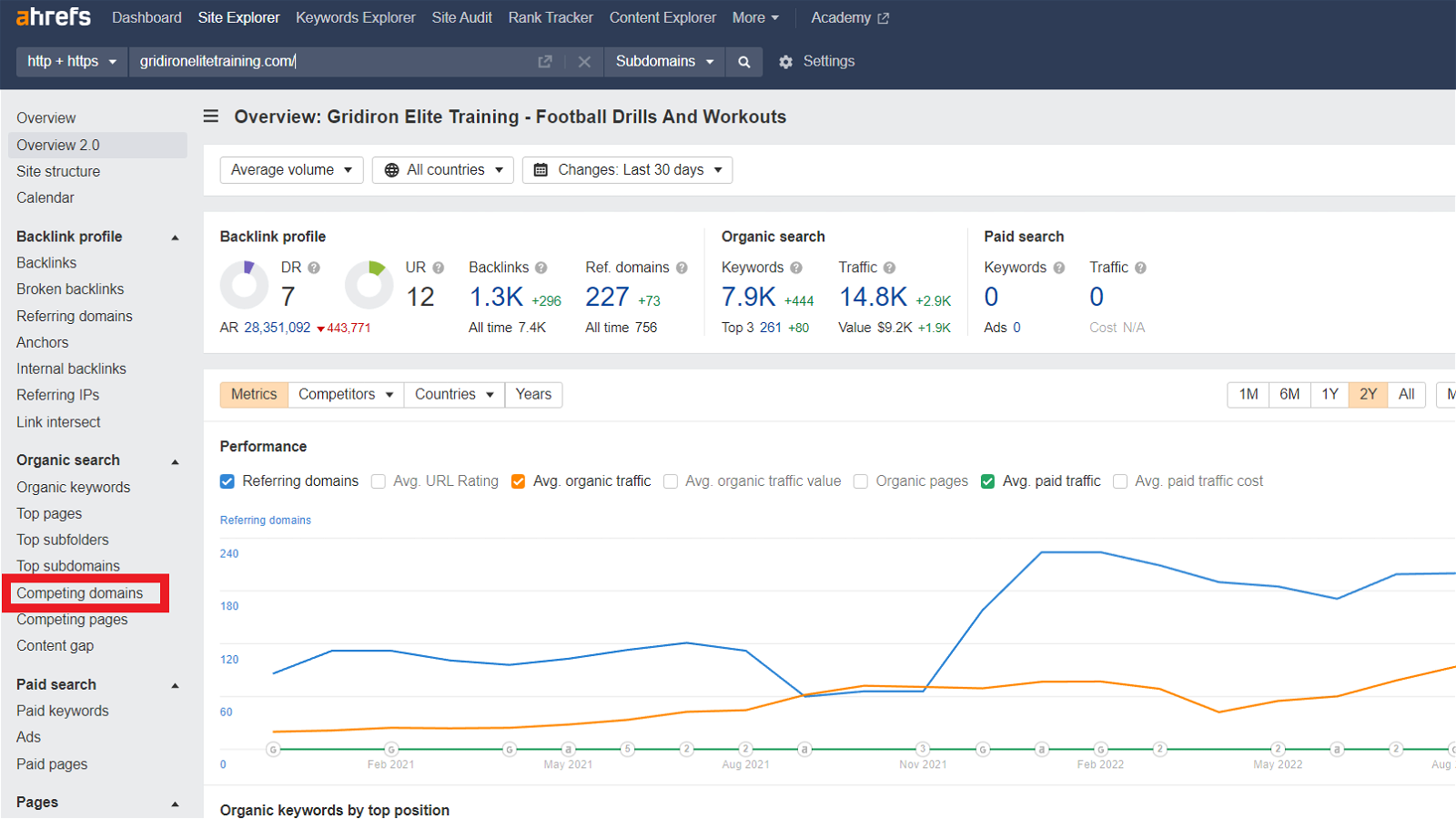
This is a football website and let’s just say it’s your website for this example.
By looking at the competing domains in Ahrefs, you’ll be able to see what websites are outranking you but of similar competition in terms of DR so you can actually compete. This is why this strategy works so great for newer domains that you’re trying to build.
It Helps You Build an Effective Link Building Strategy
This reason can be a little more challenging to understand, but it doesn’t have to be.
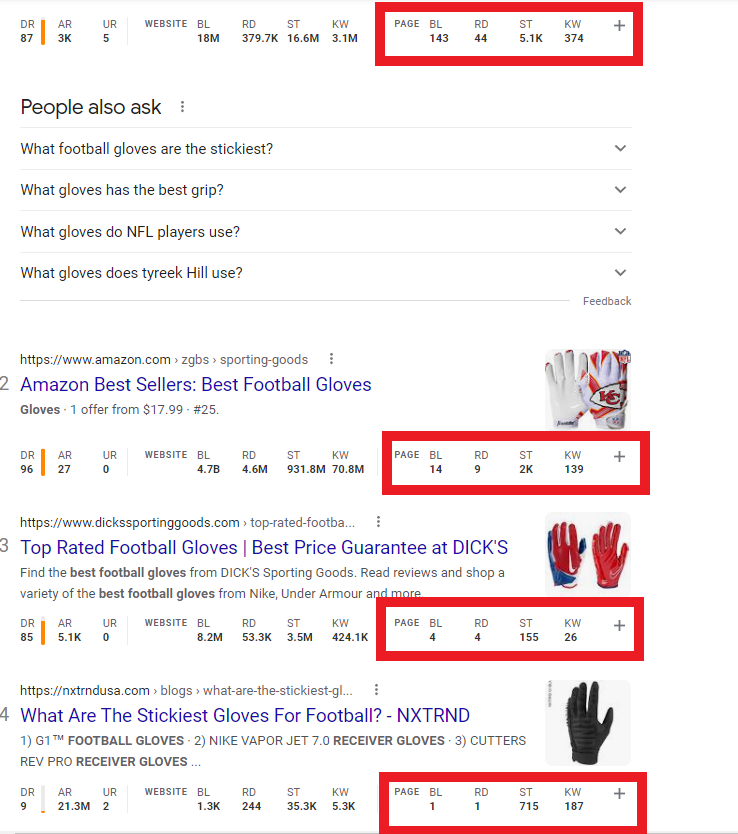
The image above is taken from the search engine using the Ahrefs Chrome Extension. We’re looking at the page level competitors that are ranking for the keyword “best football gloves.”
This is a great keyword with 3,100 monthly searches and a keyword difficulty of only 1. A lot of the top ranking articles are low DR with the exception of a few major brands like Dicks Sporting Goods and Sports Illustrated.
So, if we wanted to create an article around this topic and rank, we would want to know how many backlinks we need to compete.
Doing competitor backlink analysis helps us determine this. If you look inside the red boxes, you’ll see that the top article has 143 backlinks, the next has 4 (we ignore Amazon), and the one after that has 1.
So, we can assume that if we really want to outrank the top competitors, we’re going to need around 143 backlinks. If we want to try and rank in positions 2 or 3, we’ll need around 4 backlinks.
When you understand how many links a website or page has, you can make a plan to see how much work you’ll need to do to compete.
It’s important to understand that when you actually do your research, you may also discover that out of those 143 backlinks, many of them are low DR, crap links, that do nothing for the articles rankings.
You might discover that only 20 of the links are actually any good so the task of outranking that article may seem a little less daunting. We’ll get into this more in the following sections.
Step 1: Find Your Competitors
As you could imagine, the first step in competitor backlink analysis would be figuring out who your competitors are. There are two different types of competitors:
- Domain Level Competitors
- Page Level Competitors
We’ll discuss both of these, what they mean, and why you need to focus on both of them for this seo strategy.
Domain Level Competitors
This is a whole website competing with another whole website.
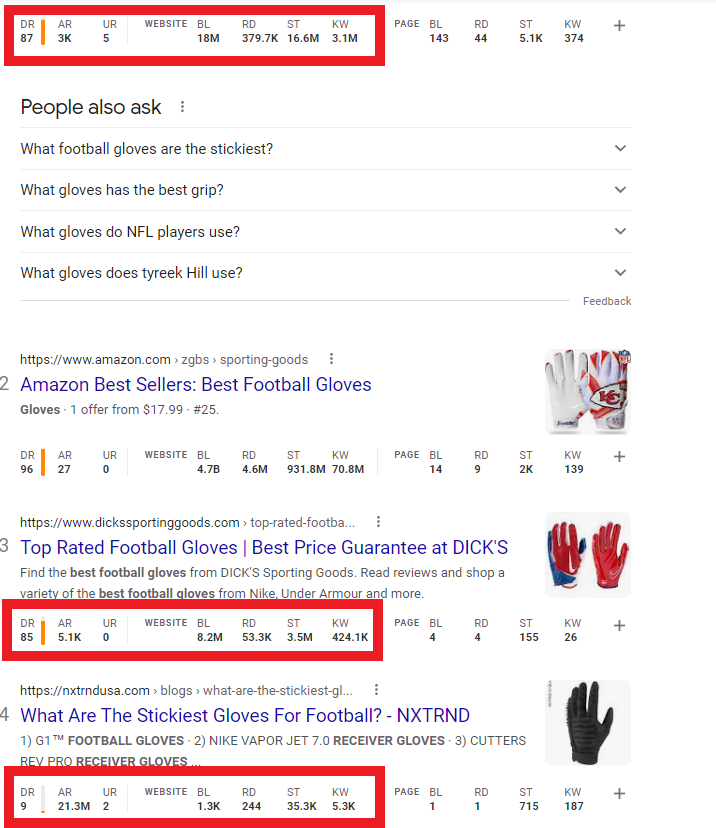
If we use the same example from the previous section, we’re now focused on the website section.
To figure out competitor backlinks on the domain level, we’ll want to use the competing domains section in Ahrefs.
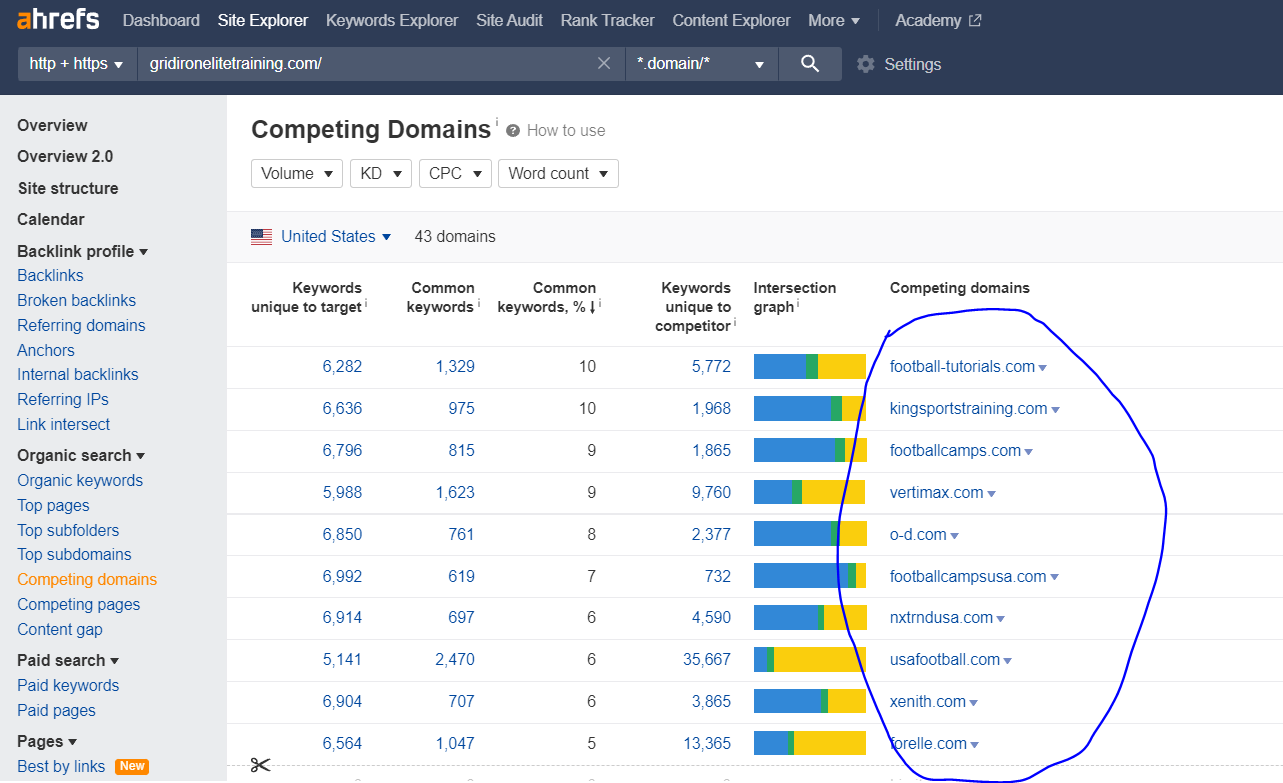
Right here are your competing domains based on how many similar keywords you share and the overall intersection of your site with their site.
These websites are also ranking for your biggest and best keywords that you’ll want to target. In addition to finding link building opportunities, this is a great way to come up with content ideas because you can see what keywords they’re chasing and create content around that.
Let’s take the top example, football-tutorials.com and take a look at their link profile. You’ll do that by copying the domain and inputting that into the site explorer in Ahrefs.
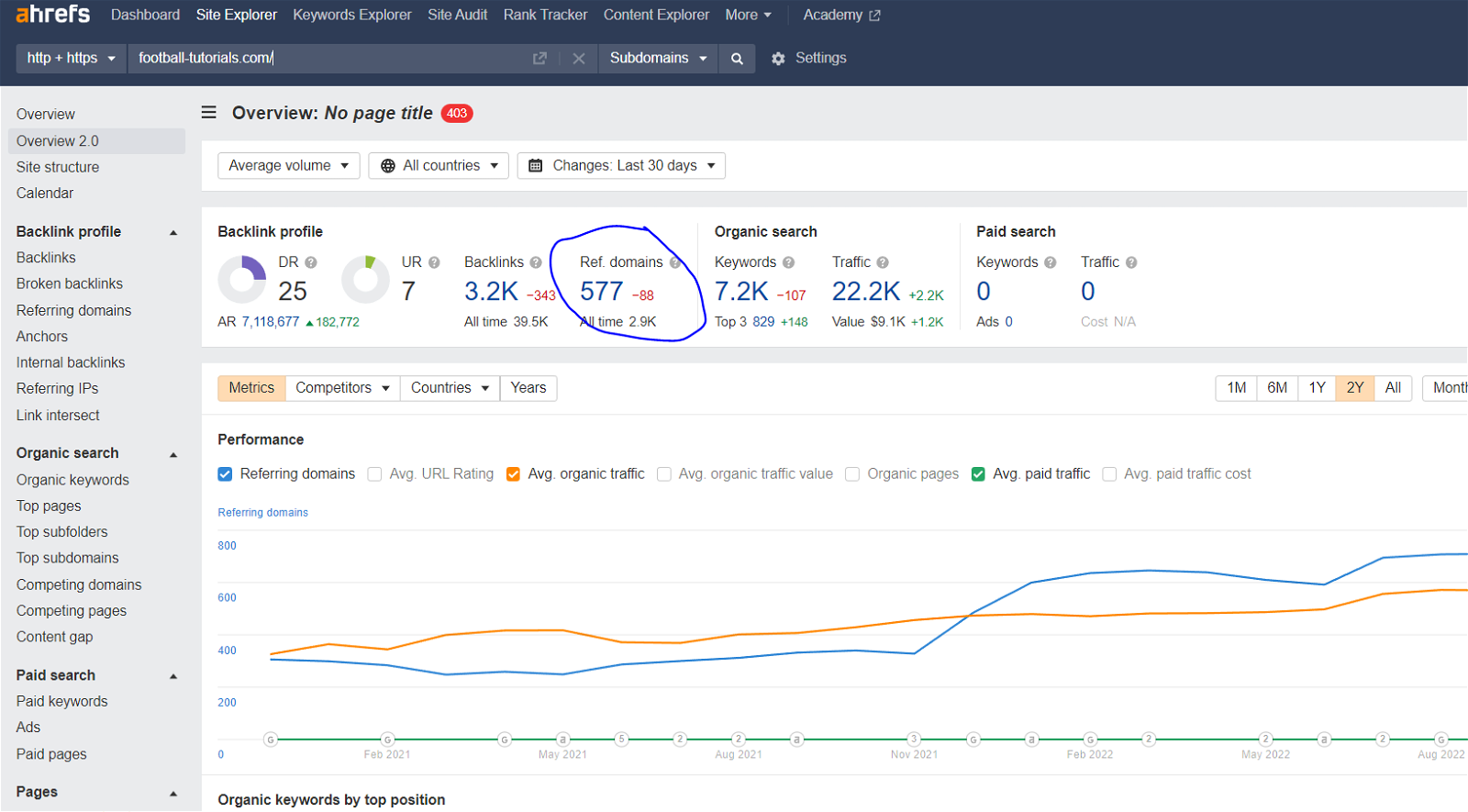
Here you can see that this competitor has 577 referring domains. These referring domains are the websites that you’ll want to compile to create an outreach campaign around. These linking domains provide links to your competitor so there is a good chance they would provide a link to you as well.
Page Level Competitors
Now let’s look at page level competitors. These are pages competing with another page. So, instead of using the full domain example for the football reference, we would refer back to the specific “best football gloves” example.
You’re creating an article on the best football gloves and you want to figure out what linking domains are providing links to your page level competitors.
One simple way to do this is by using Google and the Ahrefs Chrome Extension again.
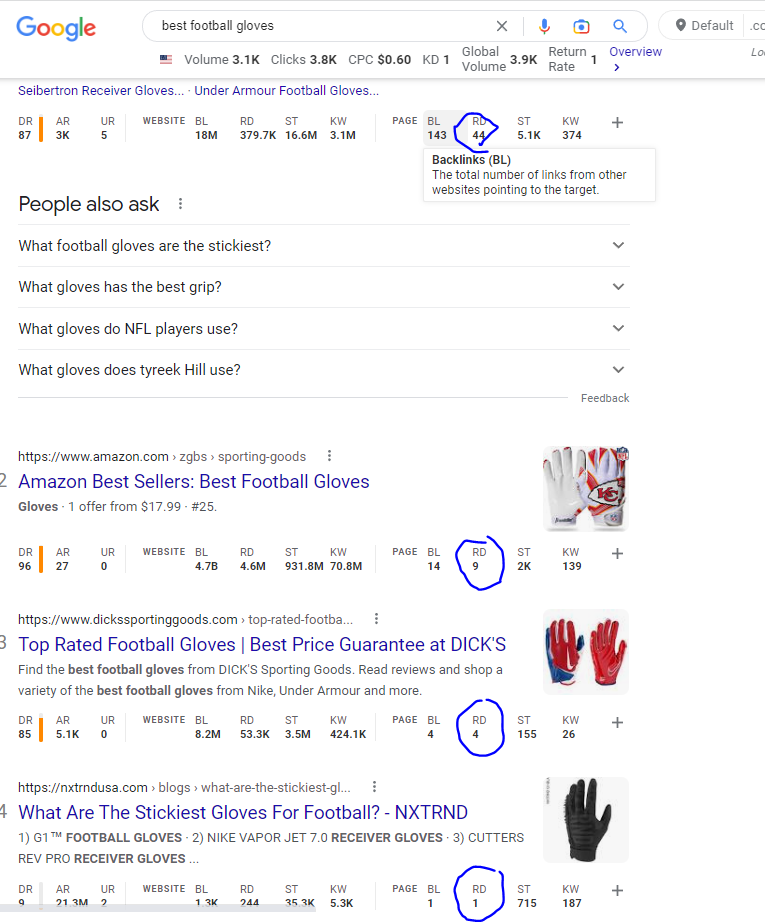
Using literally the same keywords we’ve been using throughout this entire guide we can see how much data we can salvage through one simple search.
Now we want to specifically focus on the referring domains that are providing links specifically to the page. If you click on that, it will bring up a list of the domains so you can filter out the bad results and compile a list for an outreach campaign.
Another way to do this is with the Ahrefs Keyword Explorer.
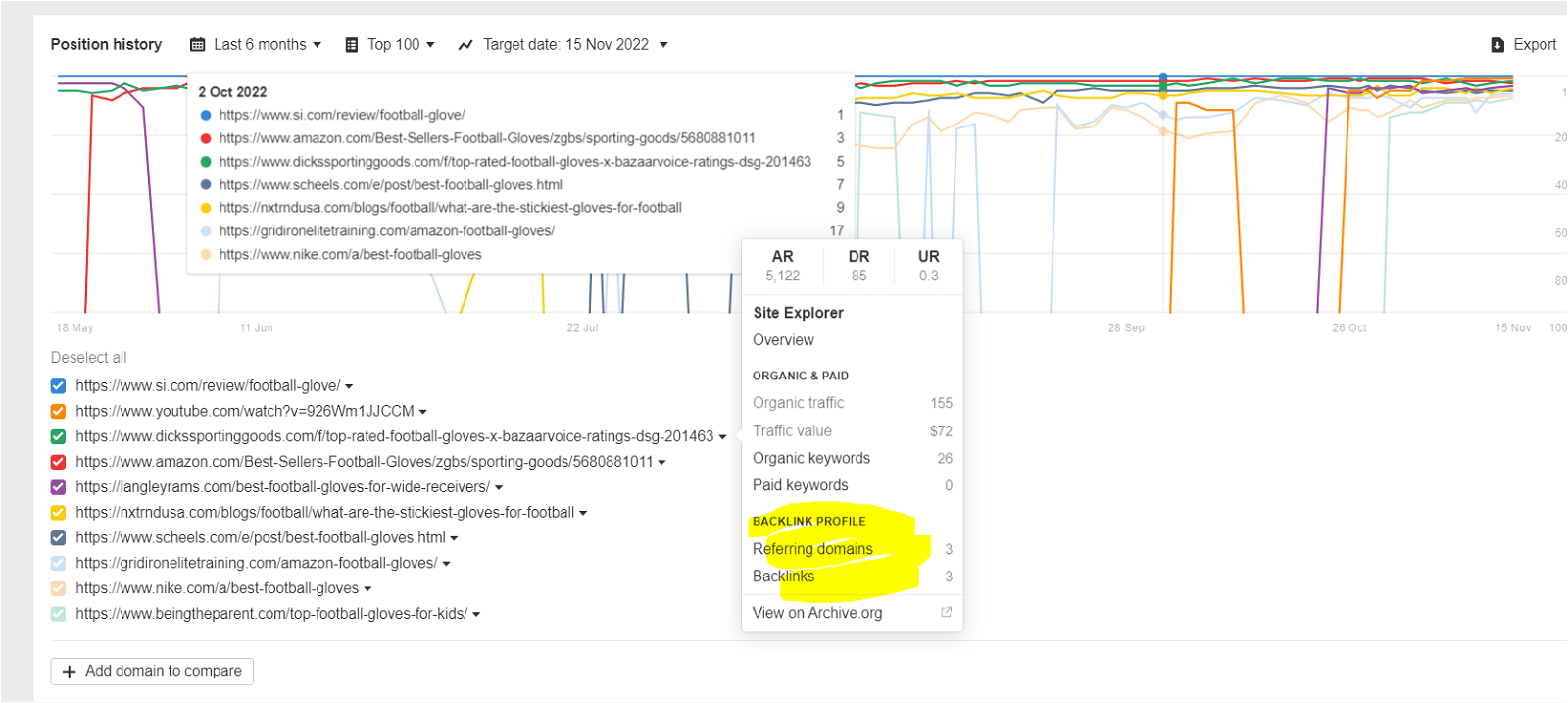
You’ll put your target keyword into the keyword explorer to see what the top ranking domain level competitors are and you can break it down by page.
Using target keywords for this backlinking strategy allows you to see similarities in your competitors as well. You’ll start to realize that a few competitors are ranking high for a number of phrases that you want to rank for.
If that’s the case, you’ll want to put high priority on them because if you can get the same backlinks as them, you’ll have a higher chance of increasing your rankings in the search engines faster.
This seo strategy will provide you with the same results but you’ll also have added data and backlink analytics all in one place.
Keep in mind that there are a number of other factors that determine the worthiness of inbound links as well. Use Ahrefs to learn more about competitors backlinks. You can choose whichever method you prefer.
Step 2: Find & Filter Competitor Backlinks
The next step of competitor backlink analysis is actually finding your competitor’s backlinks and the referring domains you want to compile into an outreach campaign.
We’ll once again do this using the Backlink analytics tool Ahrefs.
If we use football-tutorials.com like we did in previous examples, it’ll bring up a list of referring domains.
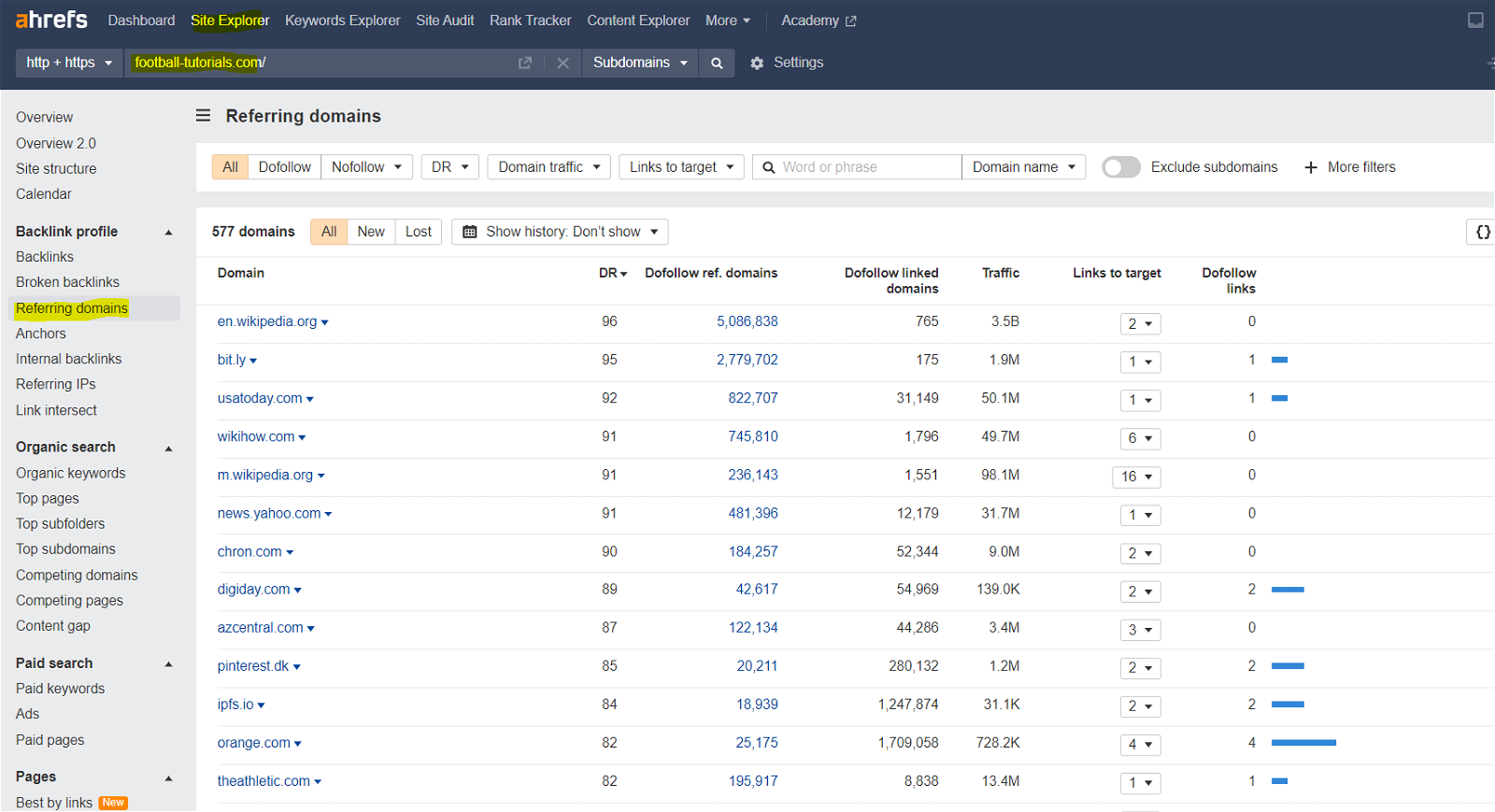
The problem is, this is a very “raw” list and we won’t be able to get links from all of the linking domain options on this page for a few reasons.
First of all, some of your competitors backlinks will be too competitive based on your current domain rating.
You can see that these domain level competitors are all really high DR with sites like USAToday, and Yahoo News linking out. It would be extremely difficult for a new website to get high quality backlinks from these sites.
Over time, as you increase your domain authority you might be able to entertain these options, but not right away.
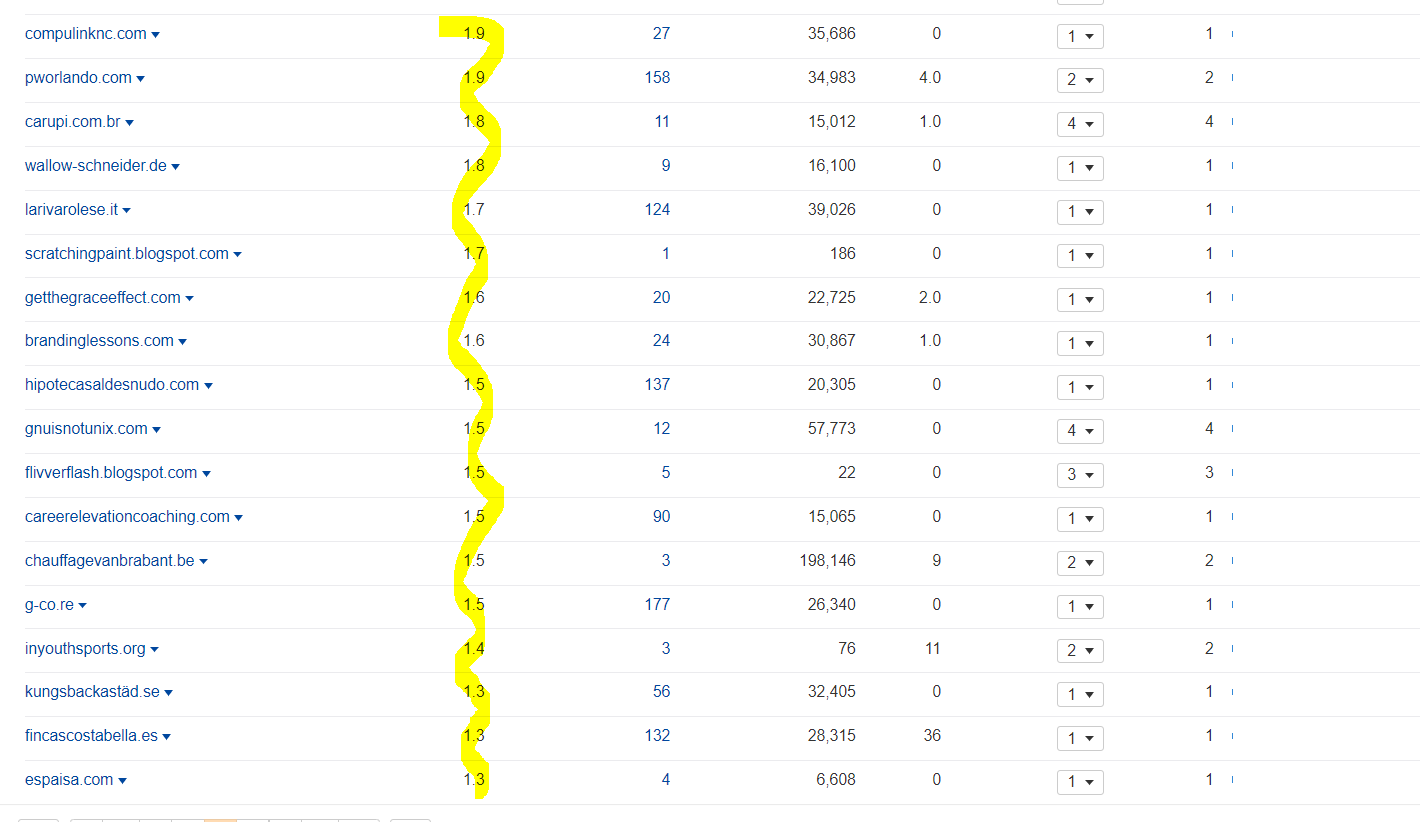
Keep in mind that the opposite is also true. Here are competitor backlinks from the same backlink profile but these are all really low DR and are likely spam links that do nothing for the rankings of a website.
These are all low quality links and unfortunately, Ahrefs doesn’t automatically filter these out so you’ll need to do that on your own to find only the high quality backlinks that are worth going after.

Here are the filters you want to apply:
Dofollow Links Only: Removes no-follow links because they have no impact on rankings
DR From 20: Removes low DR websites that are likely spammy and have no backlinks
Domain Traffic from 500: Removes sites with little to no organic traffic of their own
Excludes Subdomains: Removes a lot of forums, directories, and other spam links
Page Language English: Removes non-English sites
When you’re doing competitor backlink analysis, you only want the competitor backlinks that are going to make an impact on your backlink profile and these filters will help.
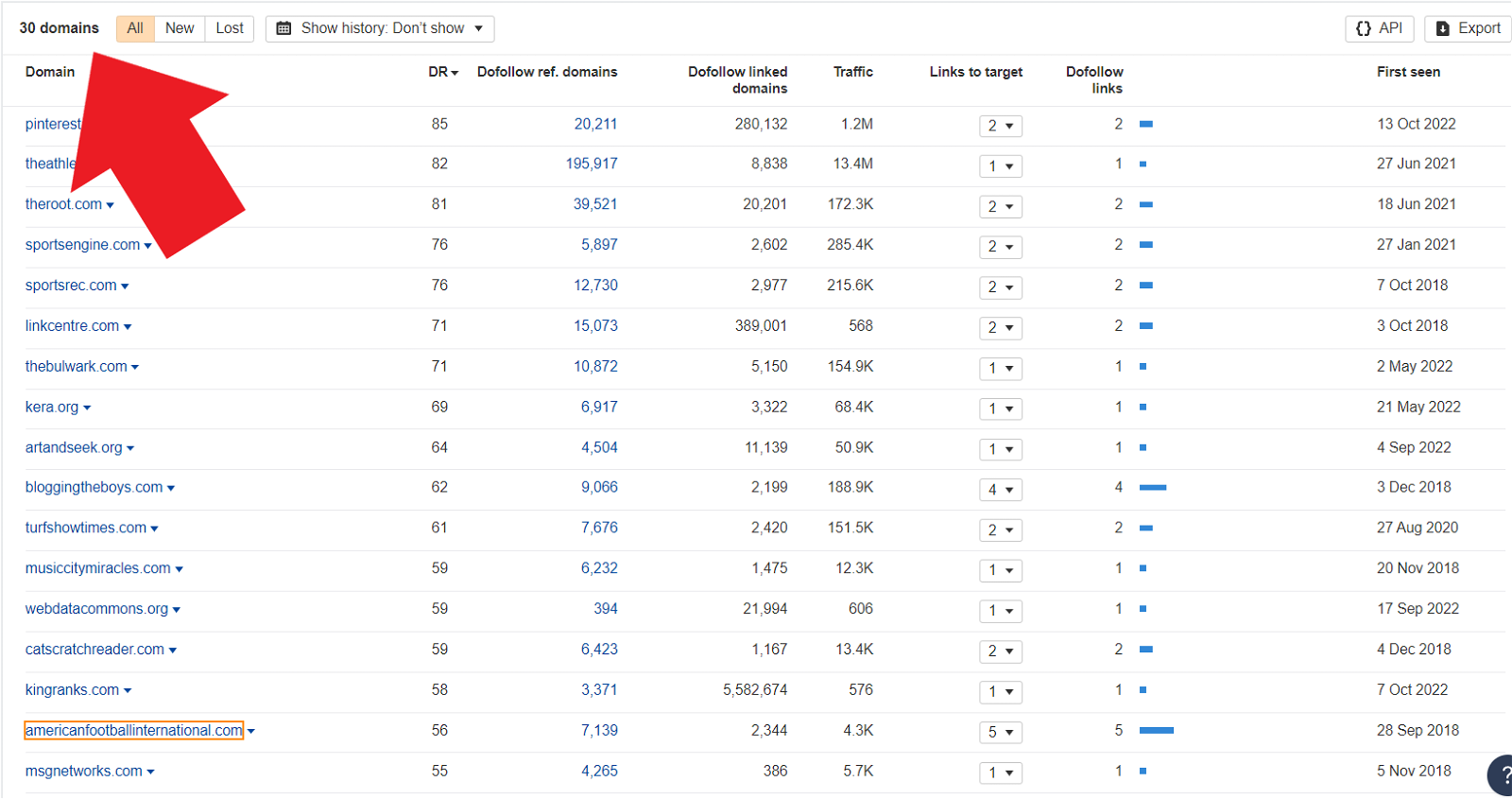
There were 577 referring domains before we applied these filters. Now we’re down to 30.
If we look at the domain that has the orange square around it, we’ll see that this could be a great example of a website we would want to get a link from. They have their own great backlink data, they have organic traffic, great DR, and our competitor already gets links from them so we know that they provide links to football related websites.
Now you’ll want to manually go through the list and build a spreadsheet of all the competitor backlink opportunities you can find. All relevant websites that look legit are up for grabs.
Once you’ve done that for one competitor’s backlink profile, find another one and repeat the process by applying the filters and manually choosing the best backlink options.
Continue using the backlink analytics tool Ahrefs to verify that these domains are worth reaching out to.
Step 3a: Copy Your Competitors Link Building
That’s what we’re here for right? We want to find competitor backlink opportunities and then use them to increase our search engine rankings.
You’ll do this by putting together a prospect list of all the domains you intend on reaching out to. As you went through the competing domains, then looked them up in site explorer, and did backlink analysis to determine which links were worth going after, you’ll want to put all of those into a spreadsheet.
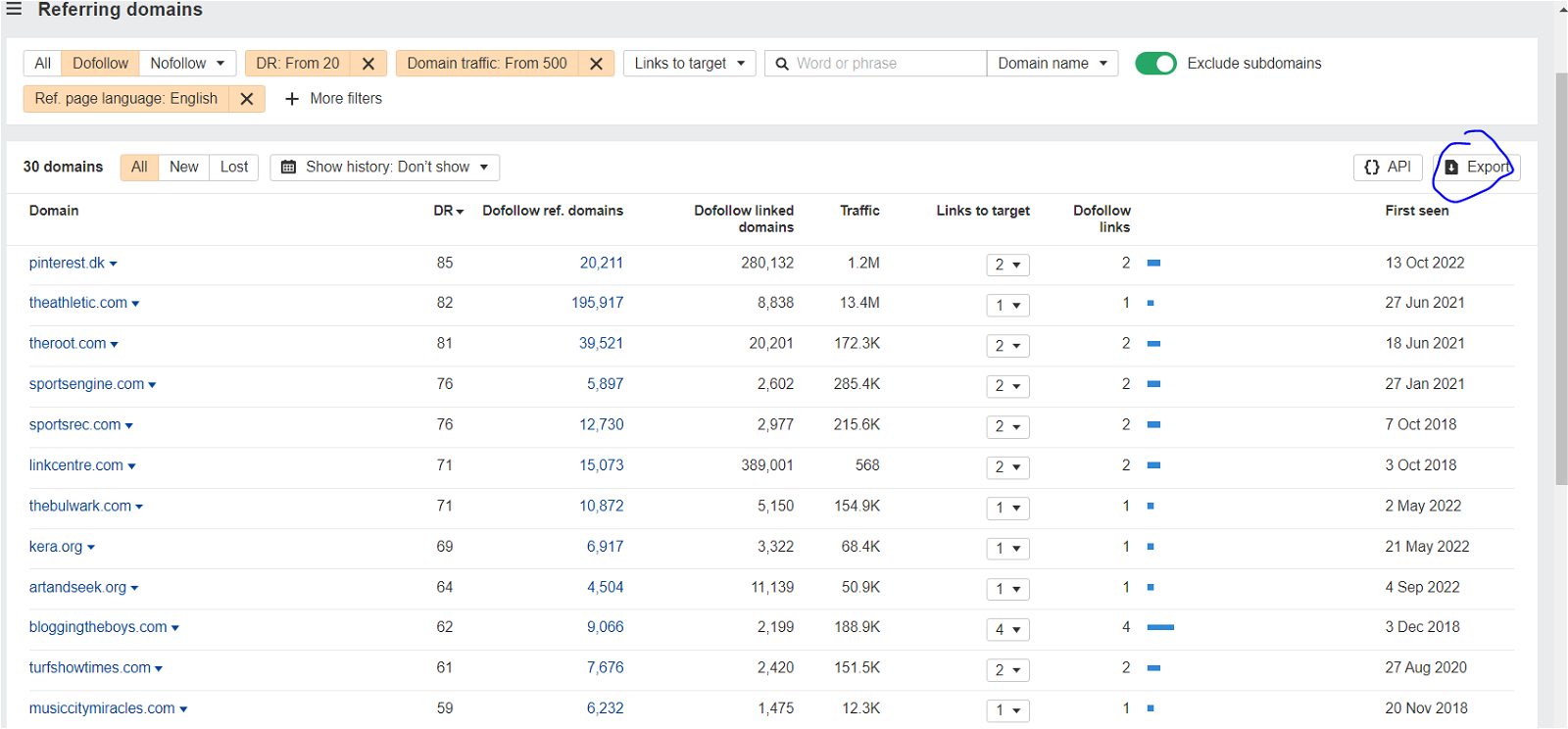
One of the easiest ways to do this is by hitting the export button in Ahrefs once you’ve applied all your filters. From there, you can take that list and manually go through them and delete whichever competitor backlink opportunities aren’t worth chasing.
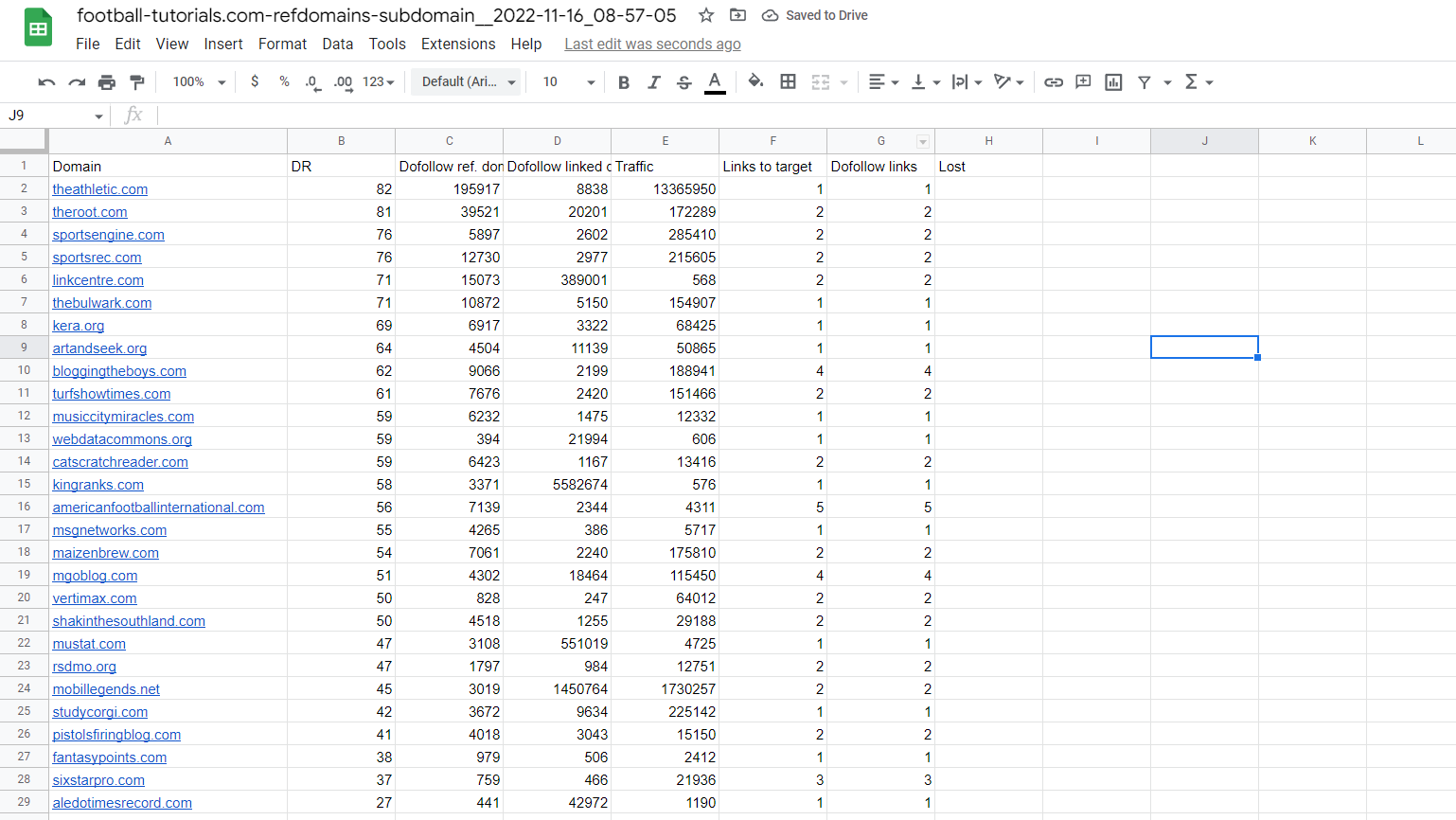
Once you have your list built out, you’ll need to find contact information for these websites.
We cover this in vast detail in our link prospecting guide.
You’ll want to use tools like Hunter.io to find contact information for these websites and start adding that to your spreadsheet next to each competitor backlink you intend on reaching out to.
The key to competitor backlink analysis is compiling a list of competitor backlink opportunities that are actually possible for you to gain. By doing this, it will save you a lot of headaches down the road.
Think about it like this. If you didn’t filter the results and you just tried reaching out to every opportunity you found, you’d end up with a lot of no-reply and bounced emails which would cost you time and money.
By filtering the results and putting in the time doing your competitor backlink analysis, you’re saving yourself a lot of time in the long run.
Once you have a long list of domains and contact information, you’re ready to start your outreach campaign.
Focus on providing value to the competitor backlink by focusing on what you can do for them. Make sure you’re flexible in what you’re willing to provide. Some sites might prefer a simple niche edit while others will expect you to write a full on guest post.
Either way, make sure you’re providing them with value, keeping your emails short and sweet, and focusing on what they want rather than what you think they need.
Step 3b: Make a Plan to Compete
This may honestly be the most important step in competitor backlink analysis because it really brings everything full circle.
If you remember in the beginning of the article, we talked about why competitor backlink analysis is one of the most popular backlink strategies.
One of the reasons was because it helps you understand what you need to do to compete with the top rankings search engine results.
If the top three articles on Google have 25 links pointing to their page that tells you that you’ll need approximately that many links to compete as well.
Now that we have our outreach list put together and we’re ready to start doing some link building, we want to figure out exactly how many links each page needs to rank.
We’ll do this by breaking our backlink competitors into domain rating brackets.
- 0-20
- 20-40
- 40-60
- 60+
Let’s use football-tutorials.com as our example again.
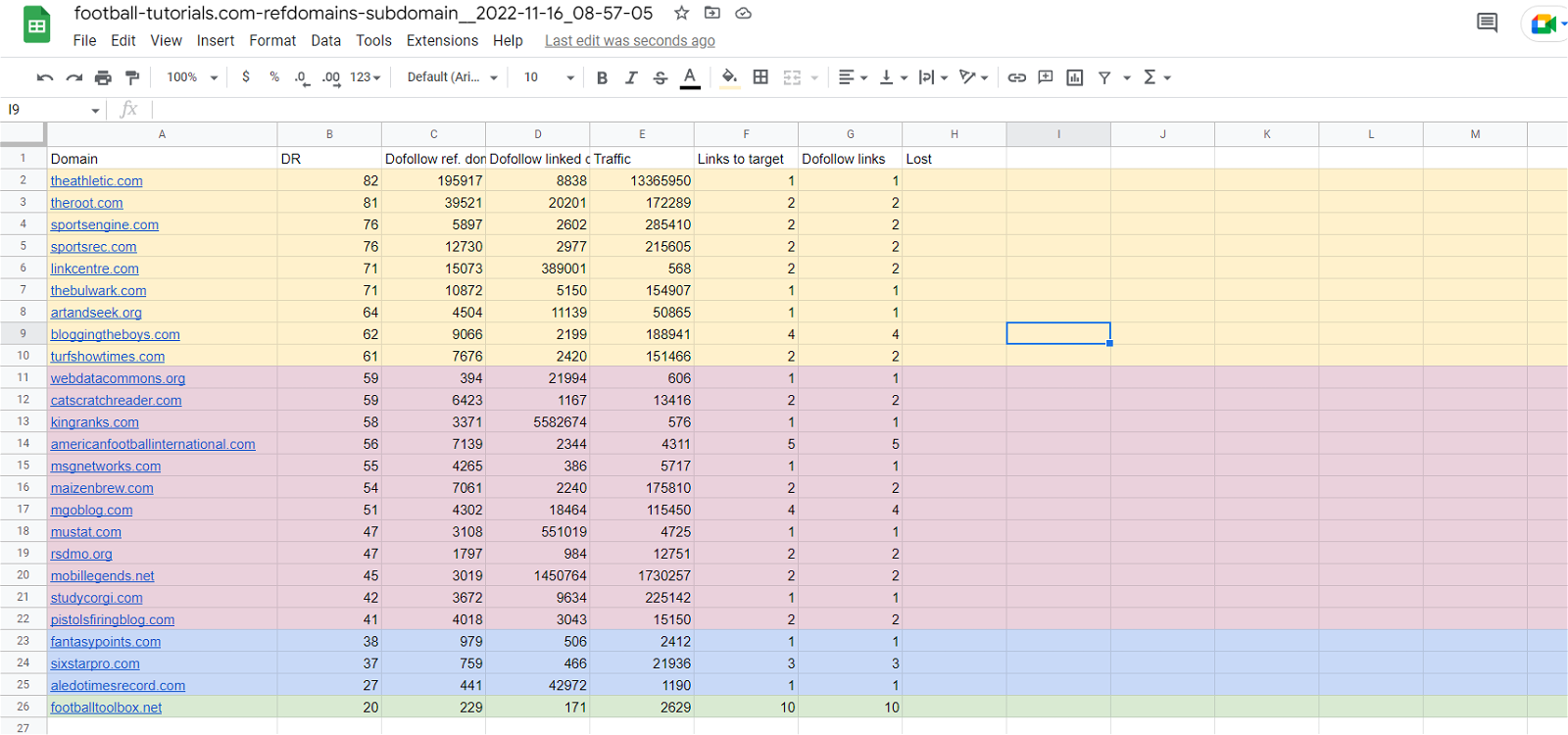
0-20 DR backlinks are green, 20-40 are blue, 40-60 are red, and 60+ are yellow. This is a domain level example. If we want to compete with football-tutorials.com, we’ll need to obtain these links of varying domain authorities if we intend to outrank them.
Now let’s do one at the page level.
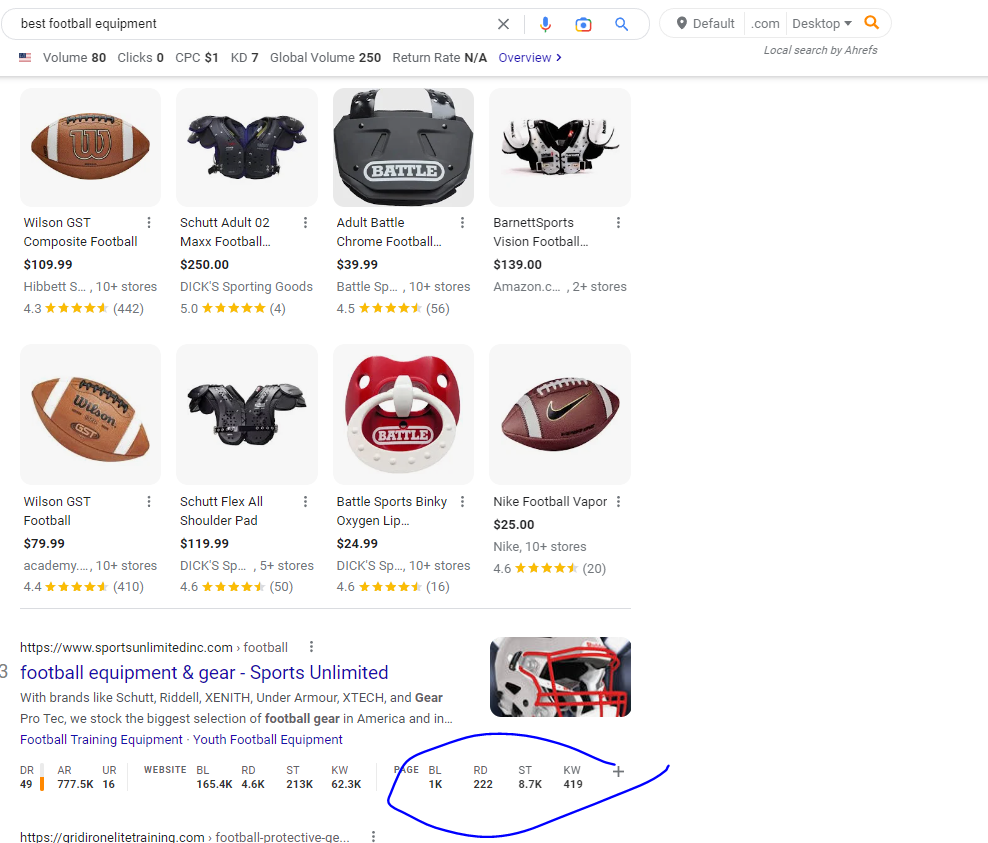
If we wanted to rank for the target keyword “best football equipment” we might want to take a look at this competing domain here.
After applying all of our filters, we’re able to bring that referring domain total from 222 all the way down to 5.

If this isn’t evidence that all links aren’t created equal, I don’t know what is. They have 222 referring domains but only five of them even meet our criteria. That means that if you could secure five decent quality links, you have a chance of outranking your direct competitors because most of their links are low-quality spammy garbage.
Final Thoughts
I hope you find value in this guide and realize that competitor backlink analysis is a great way to effectively do link building and grow your website.
Spying on your top ranking competitors and securing the same links as them is one of the simplest ways to increase your rankings and piggyback off what the competition is doing right.
Remember, Google is rewarding them for their link building efforts so why wouldn’t they reward you for doing the same thing?
Competitor backlink analysis is one of the most effective strategies that we use at We Outreach to get more backlinks for our clients. If you have any questions or you would like to learn more about our link building services, reach out to us today!

